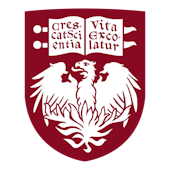Research Interests
Neural Coding and the Neural Basis of Perception
Texture perception
We are exquisitely sensitive to surface texture, able to distinguish between very fine materials, such as satin and silk. These abilities rely on three different populations of receptors that innervate the skin and call upon different encoding strategies. Indeed, coarse spatial features are reflected in spatial patterns of activity in one population of afferents while fine features, which require exploratory movements to be tangible, are encoded in precise temporal patterns of spiking in the other two receptor populations. Tactile texture processing thus affords us a unique opportunity to investigate how different neural codes operate and how these codes are integrated to culminate in a unified sensory percept.
Proprioception
We are aware of the position and movements of our limbs in space and these sensory signals are critical to our ability to plan and perform motor actions. Despite its importance, little is known about how proprioceptive information about the limb is encoded in the responses of neurons in primary somatosensory cortex (S1). To fill this gap, we track the movements of the limb as animals perform different motor tasks while recording the activity evoked in S1 neurons. We then use a variety of mathematical techniques to reveal what aspects of the neuronal response convey information about hand movements and posture.
Neuroprosthetics
One approach to restoring sensorimotor function in amputees or tetraplegic patients consists in equipping them with anthropomorphic robotic arms that are interfaced directly with the nervous system. To control these arms, not only must motor intention be translated into movements of the limb, but sensory signals must be transmitted from the limb to the patient. Indeed, without these signals, controlling the arm is very slow, clumsy, and effortful. With this in mind, we develop approaches to convey meaningful and naturalistic sensations through stimulation of peripheral or cortical neurons, attempting to reproduce, to the extent possible, the patterns of neuronal activation that are relevant for basic object manipulation. We anticipate that these studies will constitute an important step towards restoring touch to those who have lost it.
Experience
-
2009–presentAssistant Professor, Department of Organismal Biology and Anatomy, University of Chicago
-
2006–2009Associate Research Scientist, Krieger Mind/Brain Institute, Johns Hopkins University
- Website
- Article Feed
- Joined


